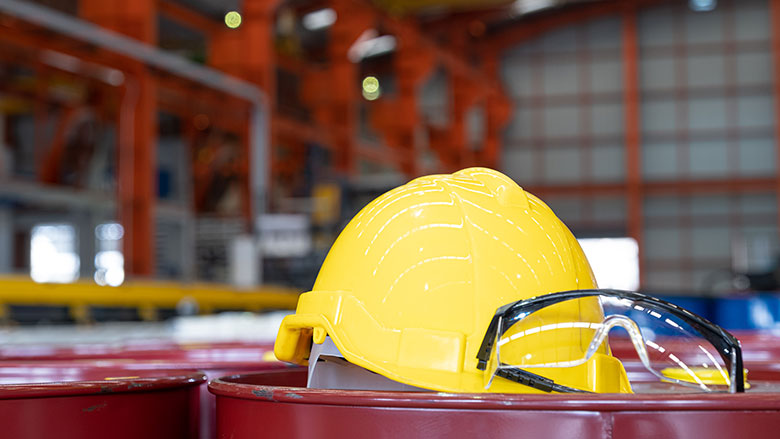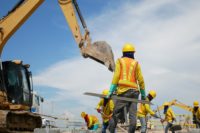Being safe is vital on a construction site. The equipment and nature of the work make it one of the most dangerous careers in the world, and instilling a safety culture is critical to preventing disasters.
Here are five ideas to help everyone on your team prioritize safety.
1. Create engaging training
At some point, you may have been brought into a room with other team members and sat through a lecture that you retained very little of afterward. Workers are likelier to forget what they learned when training is not engaging.
It’s not their fault. Attention fatigue is a problem in all industries, but with the high importance of safety on a work site, you must keep everyone involved in the training process.
Consider breaking up a long training session into multiple short ones where your team members are more likely to focus the entire time they are there. You can also provide food and beverages.
It would help if you made the training enjoyable to engage your workers. Go over real-life examples of where safety protocols went wrong and compare them to hypothetical situations your team could face. Divide workers into groups, let them find creative ways to get out of sticky situations and have them discuss their findings. That ingenuity may come in handy later.
Work through potential scenarios and emphasize how a workplace safety culture can prevent many accidents.
2. Encourage honesty
Most of your workers want to stay employed. If they do not feel comfortable raising safety concerns, they may not mention them for fear of retaliation for going against a superior’s plan.
One of the best ways to keep your team safe is to encourage them to be honest about their physical and mental condition. No one on a construction site should perform potentially unsafe tasks if they are not in the shape to do so. Being kind, empathetic and honest about your bad days can encourage them to speak up.
Consider light-duty assignments you can give team members who occasionally need a break but don’t want to go home. Make incident reports easily available to fill out so workers can report injuries.
Deadlines are important, but so is your team’s health. Being a supportive leader who checks in with your workers and is invested in their well-being ensures they don’t place themselves at risk.
3. Hire a safety manager
A construction site safety manager is a worthy investment for any company striving to protect its employees.
This manager's role is to ensure your workers comply with best practices around the work site. They regularly review your health and safety guidelines and keep up with the latest research and regulations to ensure they are updated.
Before each project begins, your safety manager should complete a site inspection to identify potential risks and determine a plan of action. They should conduct training that educates and engages fellow team members.
Your safety manager should practice what they preach and have proper qualifications. They should have safety, health or engineering education and hold current CPR, first aid and OSHA training.
Experience working on construction sites in other roles can help them better understand your team members’ challenges. Keep in touch with your safety manager through each project so you’re aware of any potential problems or liabilities.
4. Take advantage of technology
Construction technology advancements are making work sites safer each day. Taking full advantage of them can keep your employees healthy and safe and improve your work site efficiency.
Team members can use virtual and augmented reality to explore the site and identify potential hazards before they face them. The tech uses imagery and three-dimensional modeling to let team members work through possible scenarios so they know which precautions to take.
Wearable sensors built into personal protective equipment (PPE) can monitor your employees’ heart rates, heat exposure, breathing rate and carbon monoxide exposure. Some can track workers’ locations on the site so you’ll know where they are if you can’t contact them.
Various on-site construction environmental monitoring (OCEM) technologies can check the site’s temperature, humidity and air quality. These sensors inform you about potential weather-related illnesses and hazards.
You can also install sensors to detect mold levels and other hazards that can impact the PPE you provide for your employees.
Communication is vital for any industry, but modern devices cover a more extended range of potentially life-threatening situations. You can use mobile phones and tablets to send alerts, make calls and use GPS to follow your workers around the property.
5. Assign PPE
Personal protective equipment is vital to worksite safety. Gear should fit well to ensure it works properly, so provide each employee with their own set of PPE.
Preadjusting equipment to fit each worker ensures it protects your team members. You can also tell who is wearing it and who is not. Assigning PPE helps your safety manager know everyone is compliant with best practices.
Some of the equipment you should provide for your employees include the following:
- Ear protection: Construction sites get loud and can damage your team members’ hearing over time. Protective headphones can reduce the likelihood of hearing damage — particularly those designed to handle high decibel levels.
- Eye protection: Safety goggles can protect workers’ eyes from dirt, dust and other debris that could harm them.
- Hand protection: Gloves protect workers’ hands from heat, impacts, scratches and electrical shock. The size and materials should depend on their work.
- Breathing protection: Respirators can protect employees from breathing in particles that could aggravate or damage their lungs.
- Fall protection: Warning lines, guardrails, safety nets and fall arrest systems protect employees from potentially deadly impacts.
- High-visibility gear: Reflective vests, headlamps and other items can help team members see each other after dark or on a crowded site.
You can ensure each worker is as protected as possible by providing the proper PPE.
Creating a safer environment for your construction team
Your workers’ health and safety should be the highest priority on any construction site. Their lives are more valuable than avoiding delays or changes in plans. Instilling a safety culture in your team allows you to work efficiently, knowing everyone is doing what they can to prevent accidents.




